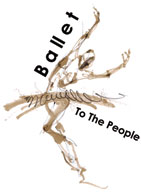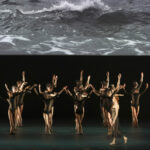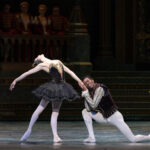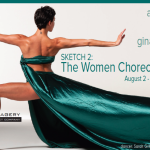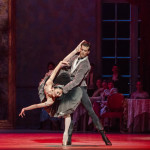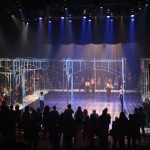Leigh Donlan reviewed the Sunday Mar 9th, 2025, performance at the Mark O’Donnell Theater in Brooklyn
Dance maker, philosopher and impresario Julia K. Gleich and her Norte Maar co-founder Jason Andrew regularly match up choreographers and visual artists in a collaborative project called CounterPointe. This year’s effort, the 12th in the tradition, featured seven pairs who produced some intriguing and imaginative work. Subjects ranged from environmental issues to philosophy to art for art’s sake, and was hosted at the Mark O’Donnell Theater in Brooklyn.
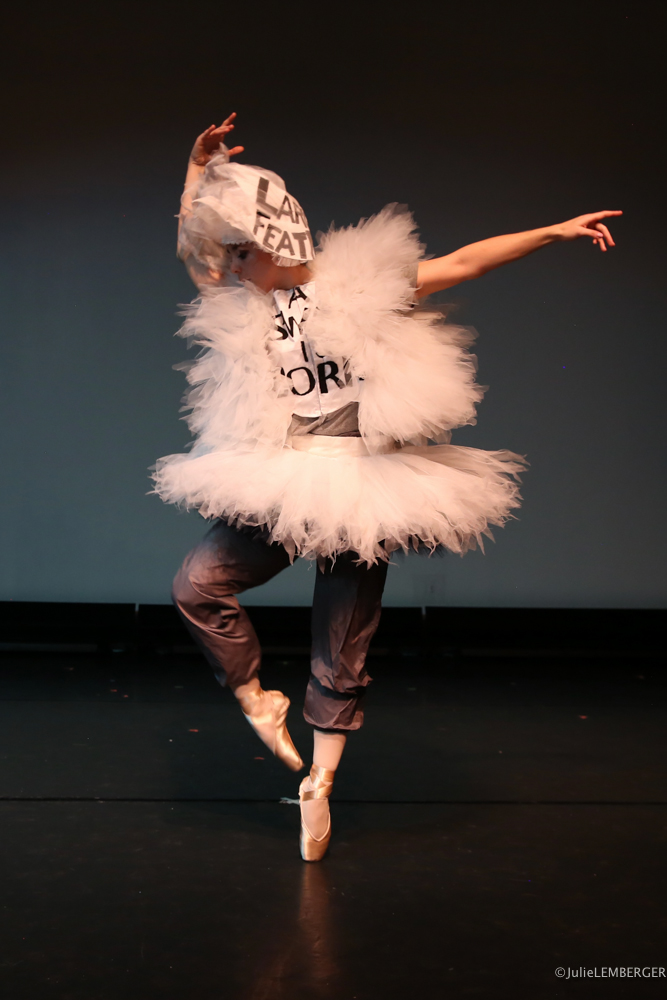
Among the more compelling pieces, Deborah Lohse’s Swan Lake in 7 whittled the standard version of the classic story ballet down to 7 minutes, a dream come true for those ballet-goers who have trouble sitting still for three hours. This efficient summation delivered humor, cleverness and a heartening resolution for the princess, dismantling the tragedy of the original version. Visual artist Micki Spiller designed the costumes and props which included a set – a large, bluish tutu with the word LAKE sewn onto it. Dancer Louise Benkelman zoomed through story highlights as Odette/ Odile, with quick costume changes from warm-up pants and an NYCB t-shirt, to an exaggerated white tutu and tulle vest as Odette, wearing a helmet-size headpiece with LARGE FEATHER scrawled on it. Then she transformed into a vampish Odile. In one snippet, she wore hand puppets, orchestrating arguments between Siegfried and the Cygnets. Lohse’s ending returned power to the princess to break the spell that had imprisoned her. The endlessly crying Odette snaps out of it, tells Siegfried it’s over and orders him to leave. Finally freed of the oppressive narrative, characters and costumes, Benkelman dropped the sarcasm and became her authentic dancer-self, moving softly and naturally, drama-free.
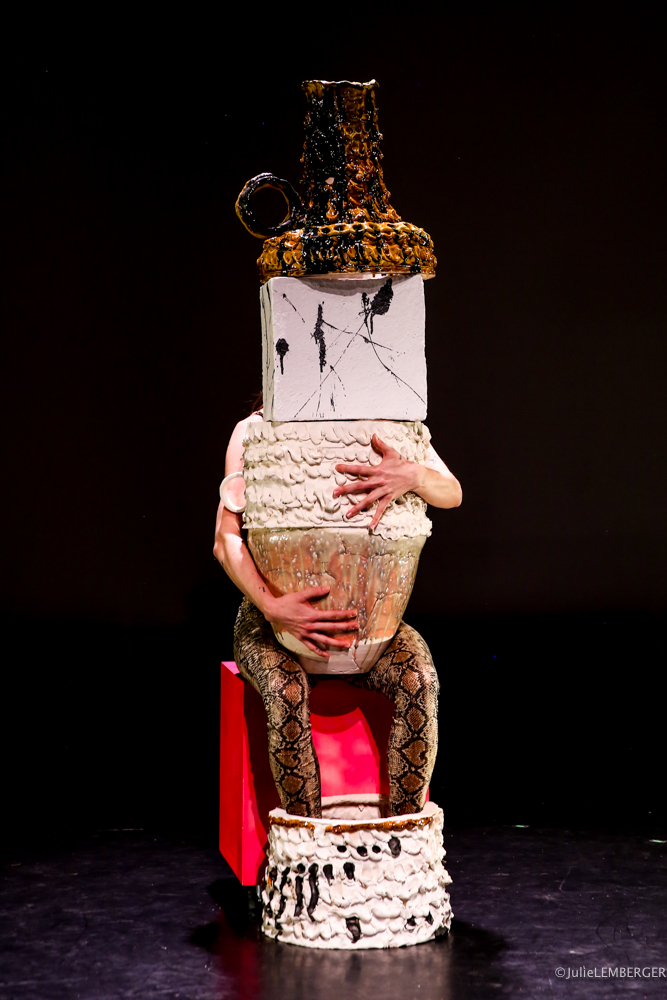
Gleich created 46 Gordon in collaboration with visual artist Nicole Cherubini, crafting a surrealist dreamscape. The program mentioned Virginia Woolf and a friend of hers from the Bloomsbury Group, referred to as II Napolitana, who reportedly collaborated with Woolf on A Room of One’s Own and who was also the alleged ghostwriter of Andre Breton’s Surrealist Manifesto. This friend was the central character in the piece, around which things happened within Cherubini’s minimalist set that created two rooms with a partition. There was no linear narrative, rather conveyed ideas and visuals of the seeming unconscious. I may have missed some of the literary references, but what struck me in the fragmented sequences of collaged costumes and choreography for 5 dancers was an erotic Salome-esque dance, a club scene, hands reaching through the penetrable partition and bits of material that resembled ceramic strewn around the stage. The ceramics were pieced together on II Napolitana to form an urn in a striking final image, the urn being a common Woolf motif.
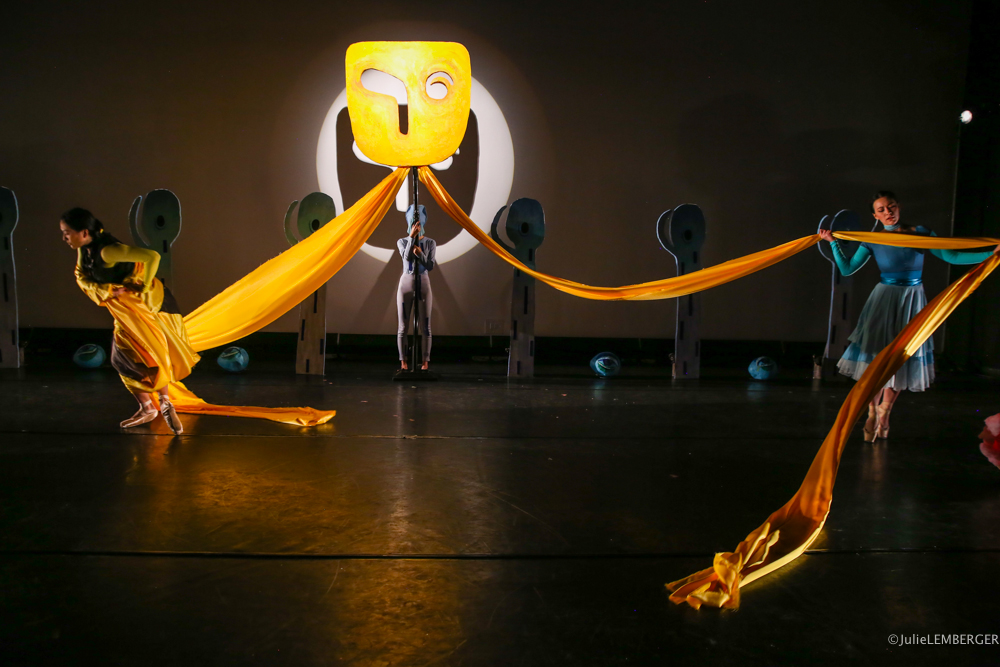
Other highlights included And so it begins, choreographed by Margaret Wiss with sets and costumes by Amy Talluto. Of her sculptures, the largest appeared like a sun god, standing about 12 feet tall with a square head and golden, flowing fabric arms which created a sort of yellow brick road for the dancers, who resembled both fairy-tale princesses and Dorothy and the Wicked Witch. The ingenious, abstract alien-cactus costumes and all-seeing, glow-in-the-dark eyeballs felt both ancient and futuristic.
itsokitsokitsokitsok cleverly turned bubble wrap into an audible runway – snapping, crackling and popping under the dancers’ pointe shoes as they marched down the makeshift catwalk, designed by Cynthia Reynolds, with choreography by Anna Antongiorgi.
Visual artist Elisabeth Condon designed intricate floral textile sculptures and costumes for a pas de deux in VERMILLION | 10, choreographed by Ava Desiderio. At times the dance and set did not feel fully integrated, one of the challenges of these quick experimental projects.
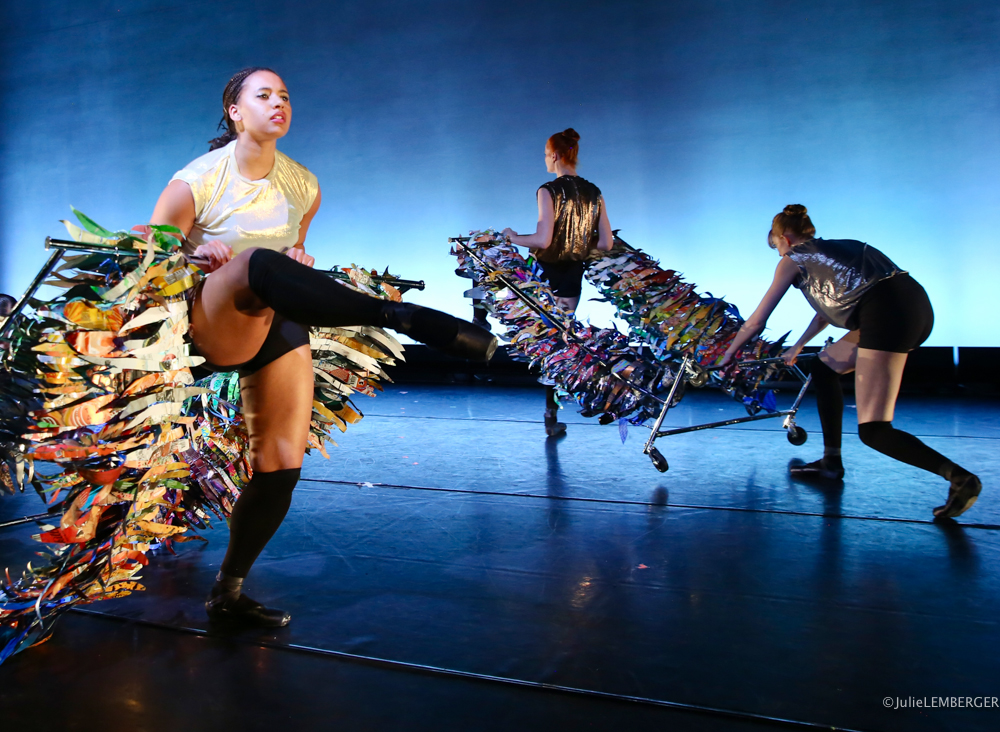
Christina Massey’s gorgeous repurposed aluminum weavings for Juliette Rafael’s Tipping Pointe served as a kelp forest, hung from mobile racks. The dancers seemed to swim in and out of the structures, not always successfully as one rack tumbled over due to their movement. That could have been the point of the title, Tipping Pointe, to signal the volatility of our marine ecosystems but it wasn’t entirely clear.
In Mountain Mouth, choreographer Magali Johnston-Viens reinterpreted a story of sacrificed Incan children who were found frozen with blood still in their veins and air in their lungs, with mobile sculptures designed by Florencia Escudero. The dancers evoked the once-dead children coming to life, exploring their surroundings with both wonder and mistrust at their strange new world.
This inventive, playful and thought-provoking program continues to bring women artists together, providing a creative and collaborative incubator. CounterPointe operates as part of a larger publicly funded nonprofit in an environment where funding for the arts is more greatly imperiled than at any point in our lifetimes. Collaborations like CounterPointe’s must be protected and encouraged at larger scales, with private and public funders banding together to resist the erosion of government support for the arts.
